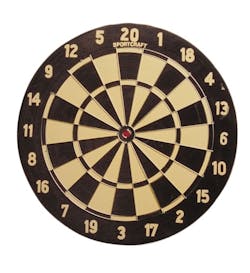Three huge issues in automotive management have just come together recently that if you own or run a shop, should take top priority, even over customer satisfaction, (at least temporarily).
First, the Occupational Safety and Health Administration (OSHA) announced that for the first time in 25 years, fines assessed by OSHA have increased. According to SESCO Management Consultants, OSHA is now required to implement an initial penalty “catch-up adjustment,” which must be in place by Aug. 1, 2016.
The increase is approximately 80%. This means the current maximum fine for a “Willful and Repeat Violation” will increase from $70,000 to $127,000, and the current maximum fine for a “Serious Violation” will increase from $7,000 to $12,500. (See sidebar for common violations.)
Second, targeting automotive repair shops has become a focus of federal administration members. They see the opportunity to show they are doing something about improving worker safety in an election year, and they also know that it could be a potential cash cow for state- and federal-strapped budgets.
To politicians, this is free money with no downside to collecting. Who doesn’t support “workers’ rights” or “safety and standards”? This is similar to the government swooping in when it hears of a business violating the Uniformed Services Employment and Reemployment Rights Act of 1994.
Literally, lawyers and news crews will parachute from the sky and rappel into your building with smoke grenades if you tell armed service people you will not honor their jobs while they serve our country. OK, not literally, but those black vans might show up....
Third, most visits by an OSHA inspector are generated from a complaint by a former employee or a current disgruntled one. When this happens, do not retaliate. This is its own violation and will compound the issue and cost you more money.
Remember this: Most disgruntled employee calls to OSHA are verified and are legitimate. That means the violation condition exists. Spend your energy and time fixing the problems instead of trying to find out who called.
So legislation, ramped up by need for revenue in an industry that has notorious high turnover, means you should at a minimum start doing something today to make sure you are not going to go bankrupt. Remember, in a shop that makes 5% net profit, a fine of $127,000 from OSHA would require that shop to sell an additional $2.5 million in sales on top of regular sales to offset the fine. For many shops, a single fine like this could spell bankruptcy, and OSHA never just has one fine at a shop. ■
8 areas OSHA will target in your dealership
Top citations issued to shops by OSHA include the following.
- Fall protection: Paint elevated steps the “safety yellow” color in all shop areas and around the building. Buy the good paint.
- HazCom: Seriously, have a meeting. This week. Review the HazCom and company policies and have everyone sign the review document. HazCom meetings are short and should be done biannually.
- Scaffolding: One common occurrence I always found to be a problem was when tires were moved from one floor to another. Some employee always unscrewed the railing or removed the chains. Even though the employee did it without your knowledge, you are responsible.
- Respiratory protection: This mostly applies to a collision center (which is lumped into “automotive repair”). But what about airborne contaminants in your shop?
- Lock out/Tag out: Ask everyone if any lifts bounce or if any equipment seems to be malfunctioning. If so, lock it out and call for repairs. It is so much less expensive to be down a bay for a day than it is to pay a $100,000 fine or settle a lawsuit. Or even worse live with a tragedy that could have been prevented.
- Electrical wiring: The minimum fine for a missing light switch plate is $2,700. The cost of plastic light switch cover plate is 50 cents!
- Machine guarding: How is it that a new bench grinder “loses” its plastic shield cover 0.0006 of a second after installing it? There is a huge fine for this.
- Tripping: Loose hoses on the ground, return parts on the floor, spills, scrap tires — if the shop looks messy, the OSHA inspector will pile on the fines. If it’s not clean and organized, OSHA will cite you and give you 15 days to tidy up.
In many cases your insurance company or local department of labor will give you a free inspection, which gives you not only time to correct mistakes, but also leniency if you can prove to a judge you are proactive about making your shop safe.
Dennis McCarron is executive director of Dealer Strategic Planning Inc., a company that manages multiple tire dealer 20 Groups in the U.S. (www.dsp-20group.com). To contact McCarron, email him at [email protected].
To read more articles by Dennis McCarron, click:
Train Potential Leaders: Say No to My Way, No Way and Any WayFacts, Figuring and Finger Pointing: As a Manager, Try to Rely on 'Just the Facts'
To read what our sister publication Auto Service Professional had to say about shop safety, click here.

